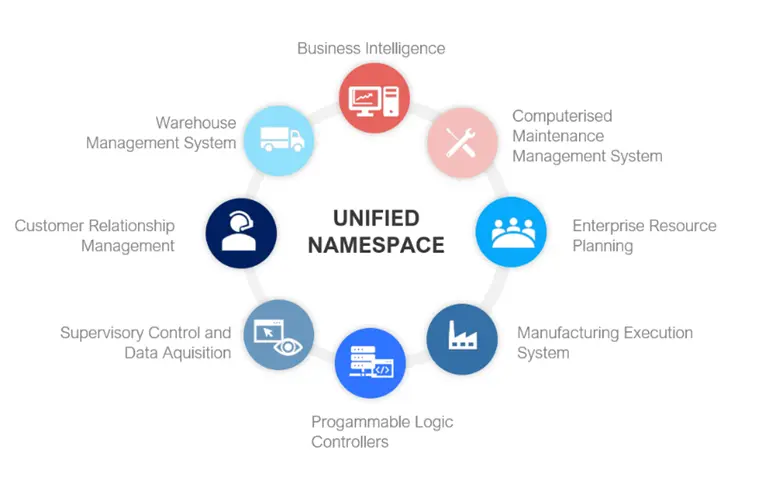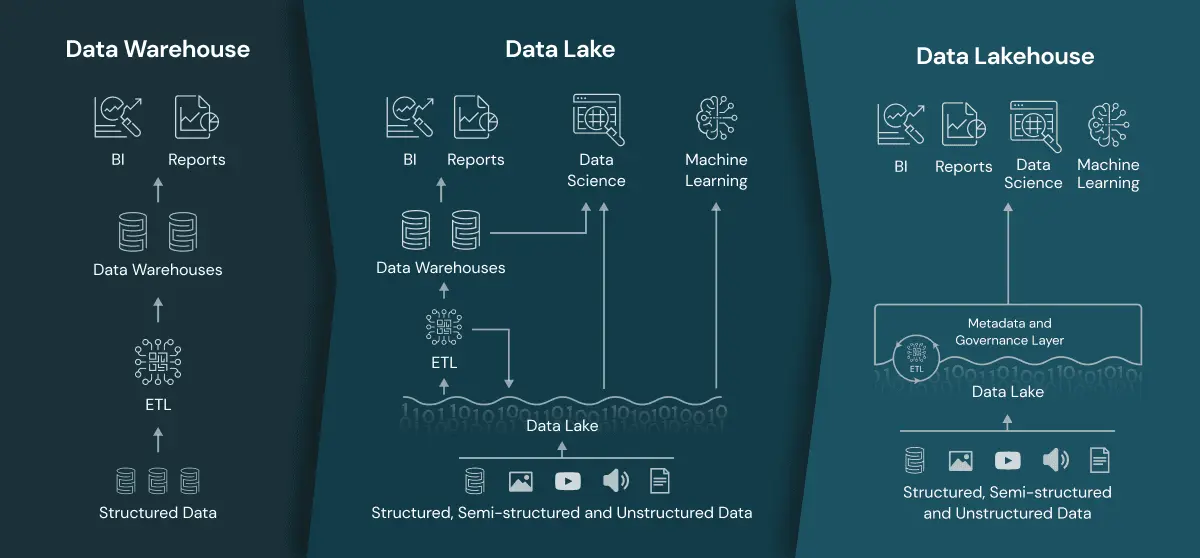Classifying OT, IT, and Business Data into the Right Storage Destination
In the world of Smart Manufacturing, simply having data is not enough. What truly matters is ensuring that data is stored in the right place to support both real-time operations and long-term analysis.
This article explains how the Unified Namespace (UNS), the Historian, and the Lakehouse each serve different purposes, and what kinds of data they are designed to store.
Unified Namespace (UNS): The Real-Time Nervous System

The UNS acts as a backbone layer for real-time manufacturing data. It carries states and events that connect the shopfloor with IT/OT systems.
Typical Data for UNS:
- Unfinished transactions: A work order just released, a production step in progress
- Live events: Machine running/idle, downtime start, operator log-in
- Recently finished transactions: A job just completed, a changeover just finished
- Contextual snapshots: Inbound queues, active recipe revisions, current shift operators
Purpose:
- Provide operators and downstream systems with a real-time single source of truth
- Support orchestration functions such as dispatch orders, Andon boards, HMI displays
- UNS is not long-term storage — it represents live context and communication
Historian: Machine Memory

The Historian is a specialized repository for OT signals that must be captured at high frequency and stored reliably over years. Its strengths lie in handling time-series data with compression, indexing, and retention strategies.
Typical Data for Historian:
- Production parameters: temperature, pressure, speed, setpoints
- Machine health: vibration, motor current, bearing temperature
- Energy usage: kW, kWh, power factor
- Cycle counters & reject counts
- Downtime events + reason codes
- Utility/environmental data: air, steam, chilled water
Purpose:
- Enable trend analysis, SPC, golden batch studies
- Support root cause analysis and predictive maintenance
- Retain data for 3–7 years to compare long-term machine performance
- Acts as the “memory” of machines and operations
Lakehouse: Enterprise Brain

The Lakehouse unifies OT and IT data for analytics, compliance, and AI/ML. It combines the scalability of a data lake with the governance of a data warehouse, supporting structured and unstructured data.
Typical Data for Lakehouse:
- Production events: order release, yield, scrap
- WIP & inventory movements: goods receipt, goods issue, shipment
- Quality data: SPC points, NCRs, CAPAs, deviations
- Maintenance data: work order history, spare part transactions
- Energy data: tariff tables, cost allocation
- ERP/IT data: sales orders, invoices, purchase orders, AP/GL, payroll
Purpose:
- Drive business analytics, forecasting, compliance reporting
- Provide training data for machine learning models (predictive quality, demand forecasting)
- Retain information for 7–10+ years at scale
- Serves as the “brain” of the enterprise, bridging production with business operations
Summary
- UNS = Real-time nervous system → unfinished transactions, live events, contextual snapshots
- Historian = Machine memory → high-frequency OT signals, long-term process trends
- Lakehouse = Enterprise brain → analytics, compliance, ML with combined OT + IT data
Executive Summary: Right Data, Right Place
| Storage Type | Purpose | Typical Data Types | Retention |
|---|---|---|---|
| UNS (Unified Namespace) | Real-time communication layer; current state & orchestration | Active orders / dispatch, machine & line states, unfinished/just-finished transactions, shift roster, active BOM/recipe | Short-lived / rolling window (seconds → hours) |
| Historian | Long-term, high-frequency machine memory; process & performance analysis | Production parameters (temp, pressure, speed), machine health, energy usage, counters, downtime events, utility/environmental data | 3–7 years (high-resolution time-series) |
| Lakehouse | Enterprise brain; analytics, compliance, AI/ML | Production events, WIP & inventory movements, SPC data, NCR/CAPA logs, maintenance history, energy tariffs, ERP/IT (sales, purchasing, finance, HR) | 7–10+ years (analytical storage, wide schema) |